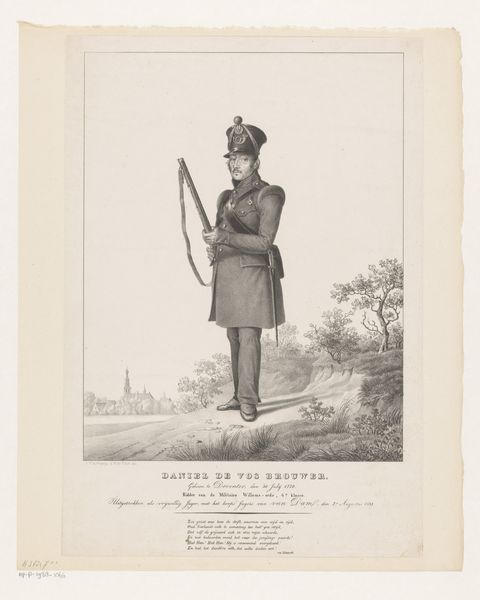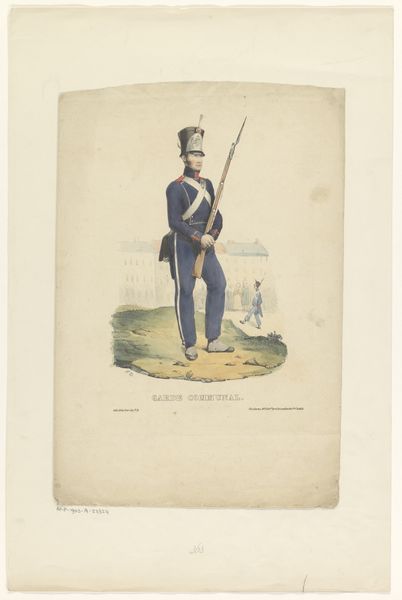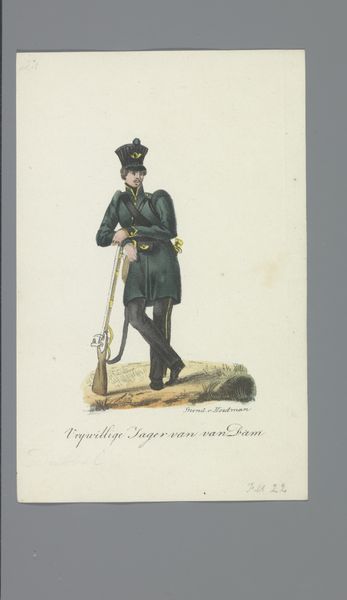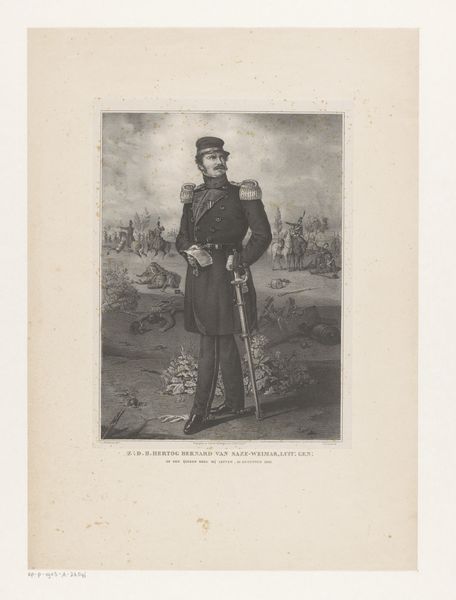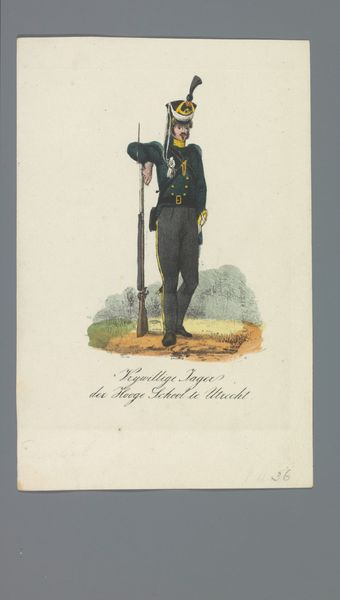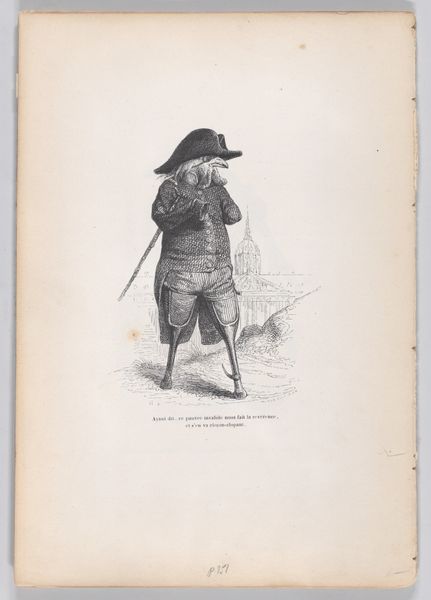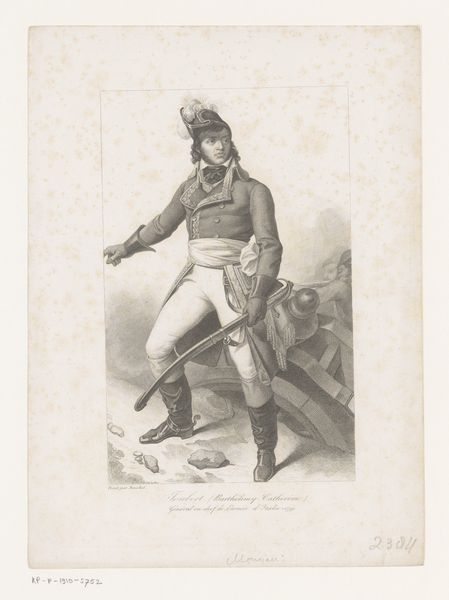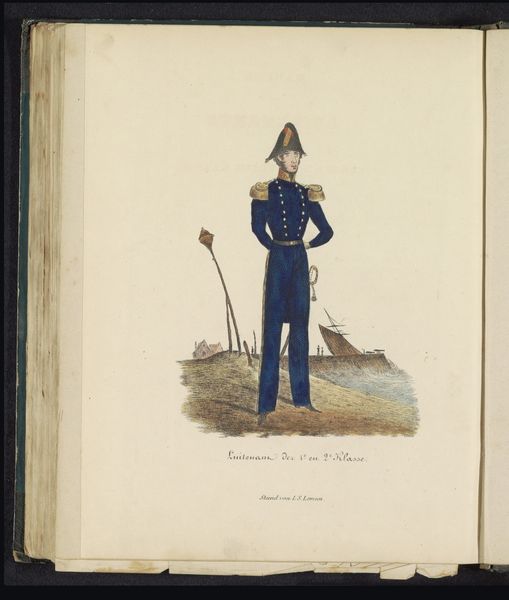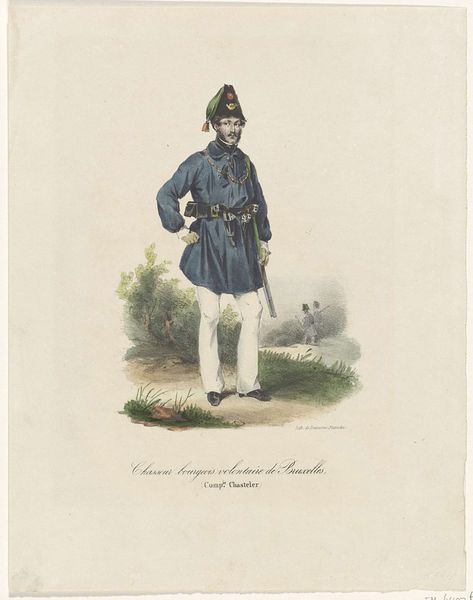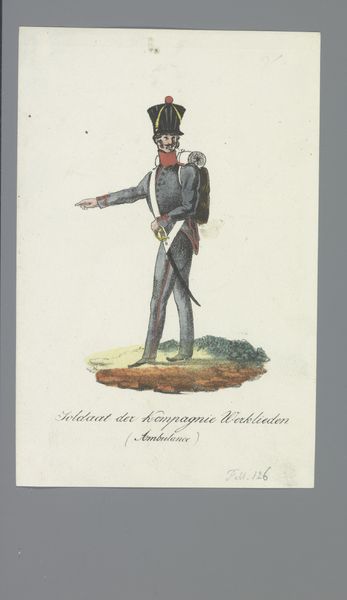
Daniel de Vos Brouwer. Geboren te Deventer, den 30 Julij 1770. Ridder van de Militaire Willems-orde, 4e klasse. Uitgetrokken als vrijwillig Jager, met het korps Jagers van Van Dam, den 2e Augustus 1831 1831
0:00
0:00
louishenridefontenay
Rijksmuseum
print, engraving
#
portrait
# print
#
landscape
#
romanticism
#
engraving
#
realism
Dimensions: height 445 mm, width 323 mm
Copyright: Rijks Museum: Open Domain
This portrait of Daniel de Vos Brouwer was made in the 19th century by Louis Henri de Fontenay. It's a lithograph, a printmaking technique that democratized image production. The lithographic process involves drawing on a flat stone with a greasy crayon, then treating the stone so that ink adheres only to the drawn areas. This allowed for relatively quick and inexpensive reproduction, in comparison to older methods like engraving, that demanded enormous skill and labor. Looking at the image itself, it’s interesting to consider how the relative ease of production might have influenced its style. The crisp lines and tonal gradations give it a photographic quality, fitting for an officer of the time. The proliferation of printed images like this one reflects broader shifts in society, with new technologies altering how people saw themselves and their place in the world. It certainly beats having to sit for a painted portrait. This work prompts us to think about how shifts in the means of production change the ways that we perceive and represent the world around us.
Comments
No comments
Be the first to comment and join the conversation on the ultimate creative platform.
